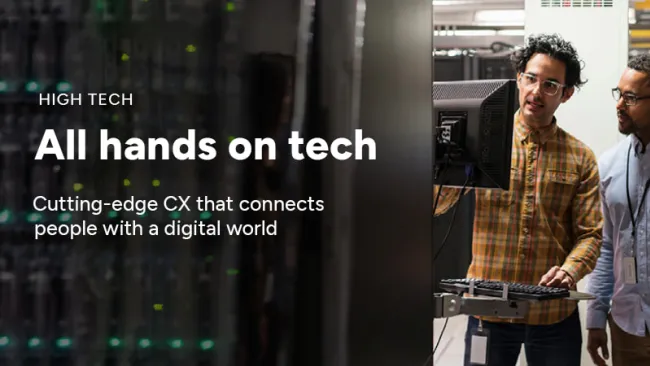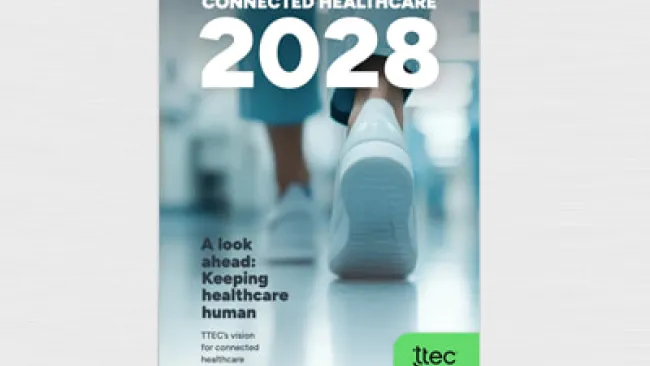In January Intel CMO Deborah Conrad stepped onto a stage at the Anaheim Convention Center in California where the organization was holding an internal marketing and sales conference, and introduced wil.i.am to the audience as the company's new director of creative innovation. The move, Conrad hopes, will help unite technology and creativity at the semiconductor chip maker, as well as help Intel reach new audiences.
Leveraging the Grammy-winning artist and front man for the Black Eyed Peas is just one of the recent innovations that Conrad has deployed to help link traditional marketing concepts with digital and to further the enterprise's multichannel approach to brand messaging and communicating with customers.
This move comes on the heels of what Conrad calls the organization's "big, cathartic moment," which happened a little over two years ago when the company took an unorthodox approach to its marketing and branding efforts by abandoning traditional advertising methods and adopting a digital-only marketing strategy.
In 2008 the company had conducted a survey of the factors that influence consumers' buying decisions. Results showed that three to four of every five people interviewed indicated that online media influenced their choices. Based on these results, management decided to adopt a digital-only approach to its branding and advertising. Hopefully, the decision ultimately would cast Intel as a technology-focused innovator that celebrates its technophile culture. "We said, 'Let's make people understand Intel,'" Conrad says. "For us, it was about eating our own dog food."
So in 2008 Intel ended its print and television advertising spots and entered exclusively into the online environment, increasing media outlays for its online ads to more than 50 percent of its marketing budget, up from about 15 percent in 2006. Intel also required technology companies like Sony, Dell, and Toshiba that take part in the "Intel Inside" cooperative advertising program to spend a minimum of 35 percent of the money that Intel gives them on online marketing.
Scaling for digital
When Intel decided to adopt a digital-only approach to marketing, the moment was monumental, according to Conrad. The company had to rethink its staffing and redesign its website, because getting people on board with interactive and digital experience was critical to success. "We went through aggressive hiring [of marketers with digital expertise]," Conrad says. "In some cases you can teach old dogs new tricks and in others you have to buy new dogs."
The other main element of moving to an all-digital approach involved reinventing Intel.com to make the site more of a destination. Conrad says that the website, built 15 years ago, was constructed to serve pages of information, not to communicate with customers in tailored ways. So, she and her team sought out today's best practices for the Web and social. They conducted due diligence like visiting agencies and asking their creative teams to share examples of digital strategies that have worked well in other organizations. "We're not ego driven. We wanted to get it right," she says.
When developing its Web analytics, for instance, Intel hired consultants to help shape its new measurement strategies and to answer employees' questions. "Having really good analytics and metrics in place is the same as having good campaigns," Conrad says.
And in social media, Intel "borrowed" ideas from industry leaders like former Sun Microsystems CEO Jonathan Schwartz, one of the first C-level executives to be an avid blogger. These ideas helped to motivate Intel's management to blog, to shape Intel's social platform, and to determine how to leverage its employees as brand ambassadors in the social realm. "Every corner of everything we were doing had a digital element. Now it's part of the air we breathe," Conrad says.
Coming full circle
For two years Intel relied largely on digital channels to relay its messaging. During that time Conrad and her team came to realize that digital alone was not enough. Customer profiles and the channels in which customers consume media are continuously changing and require a broader reach. Consequently, Intel needed to strike a balance between digital and traditional media to reach customers in the channels of their choice. "We said, 'We're missing something…. The absence of [traditional media] made us realize that we needed both," Conrad says. "We went to the far extreme and pointed out the big holes. We realized that we didn't want to leave the holes."
Sometimes brand awareness, Conrad adds, simply means a customer talking to a neighbor or a Best Buy sales rep about Intel. "That's where our brand works the hardest and that's where we need to help consumers understand their options," she says.
Now Intel is going through another cathartic change by moving away from a digital-only approach and reorganizing its processes and departments to work collaboratively to ensure the success of a multichannel marketing strategy.
Conrad, however, didn't leave this integrated campaign design to chance. She now has dedicated channel teams who work collaboratively. The Web marketing team, for example, sits with the creative services group, which design the print, outdoor, and phone campaigns, as well as the messaging for Intel.com. Now, when Intel launches a product or campaign, the two creative teams partner to design a television ad or they may produce a paid digital video for Hulu.
The social media and PR teams sit together so they can work closely on designing social campaigns. The teams collaborate to craft a single strategy across all channels. "We wanted to look at media holistically. Now what we are pushing virally is integrated and works well together," Conrad says.
Conrad also relies on centers of excellence (COEs) representing areas like messaging, social media, events, and advertising. In these centers, campaign architects from within the organization serve as designated representatives for the various media teams; they volunteer or are chosen by management. The employees, who also represent Intel's various geographies, meet as a group via teleconferencing to help design strategies and messaging, and then return to their teams with suggestions and ideas.
Sometimes the COEs hire industry experts from outside the organization to present new findings relevant to each COE. For example, Conrad, who holds a seat on the messaging COE, says that her team hires messaging experts to come to the organization to lead discussions on current messaging strategies, to test the effectiveness of various messaging styles, and to continuously monitor pop culture to better craft timely, relevant messages.
A cathartic two years
Conrad says that the shift to digital served as an important time for the organization; it forced the company to improve how various marketing teams work together on Intel's overall marketing strategy, as well as gain an understanding of digital tools and Intel's infrastructure. She adds that Intel has learned valuable lessons over the past two years in understanding the tactics and elements that work best, and not to look at channels or approach projects or strategies in isolation. Looking back, Conrad says, "It wasn't about going digital; it was about challenging the way we had always done something. That was a good, cathartic two years."
Intel today, Conrad says, views the last couple of years as a journey and its employees as change associates. As a result, the company approaches every campaign holistically and is not afraid to experiment—like hiring will.i.am. Employees are inspired because even if they get a campaign or strategy wrong, they will learn what not to do the next time, Conrad says. "At the end of the day, it's about making tough decisions…and staying focused and having fun," she says. "If we don't have people loving what they're doing then something is wrong."

















